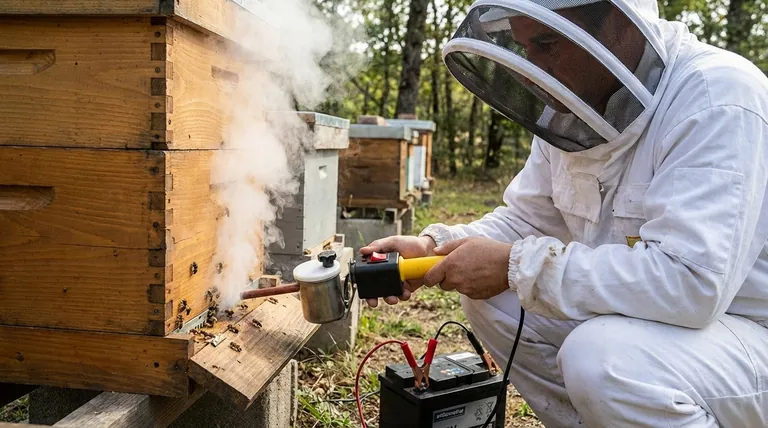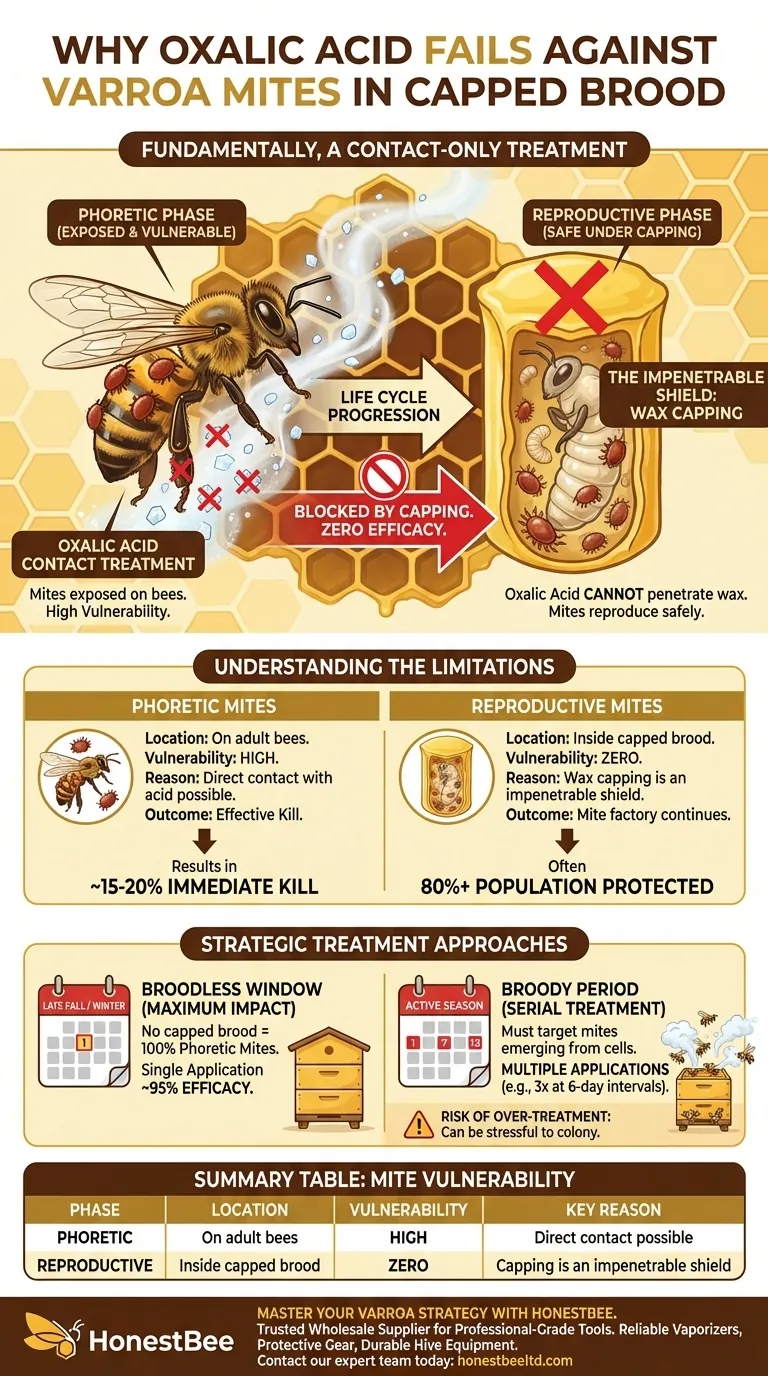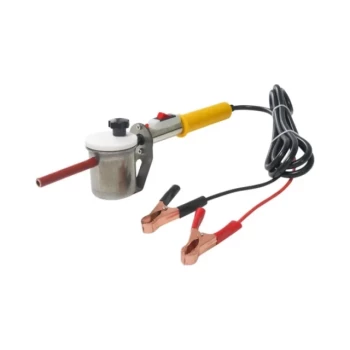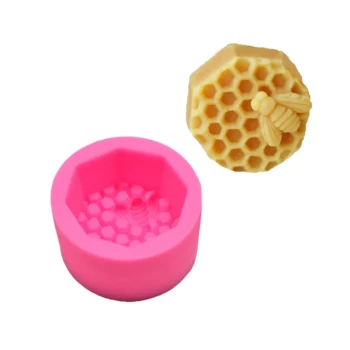Fundamentally, oxalic acid is a contact miticide, meaning it must physically touch a Varroa mite to be effective. It is not effective against mites in capped brood because the protective wax capping over the cell prevents the acid from reaching the mites reproducing inside. This leaves the majority of the mite population completely shielded from treatment.
The core issue is a mismatch between the treatment's mode of action and the mite's life cycle. While oxalic acid is highly effective on mites riding on adult bees, it cannot penetrate the physical barrier of a capped brood cell, where most mites reproduce.
The Two Phases of the Varroa Mite Life Cycle
To understand why oxalic acid fails in capped brood, you must first understand the two distinct stages of a mite's life. A hive's mite population is always split between these two phases.
The Phoretic Phase: Exposed and Vulnerable
When a Varroa mite is in its phoretic (or "traveling") phase, it is attached to the body of an adult honey bee. Here, it feeds on the bee's fat bodies and is exposed to the hive environment.
Mites in this stage are highly vulnerable to "contact" treatments like oxalic acid, whether applied via vaporization or dribble.
The Reproductive Phase: Safe Under the Capping
The most critical phase of the mite's life occurs inside a capped brood cell. A mature female mite enters a cell just before it is capped, then lays a series of eggs that hatch, mate, and mature within the sealed cell.
This is where the mite population explodes. Crucially, the wax capping is an impenetrable shield. Oxalic acid vapor or liquid simply cannot pass through it to kill the original mite or her offspring.
How Oxalic Acid Works (and Where It Fails)
The effectiveness of any Varroa treatment is dictated by its ability to reach the mites. Oxalic acid's limitation is purely physical.
A Contact-Only Weapon
When oxalic acid is vaporized, it re-crystalizes into microscopic particles that coat the surfaces within the hive, including the bees themselves. When a phoretic mite comes into contact with these crystals, it dies.
The treatment works by direct contact, not through a systemic effect on the bees.
The Ineffectiveness of Brood Presence
When a colony has capped brood, a significant portion of the mite population—often 80% or more—is in the reproductive phase and protected under cappings.
Applying oxalic acid at this time will only kill the smaller, phoretic population on the adult bees. The reference materials note this results in an immediate kill of only 15-20% of the hive's total mite population. The "mite factory" inside the brood cells remains fully operational.
Understanding the Treatment Strategies
Because of this limitation, beekeepers must adopt specific strategies to use oxalic acid effectively. Timing is everything.
The "Broodless" Window: Maximum Impact
The most effective use of oxalic acid is a single application during a naturally broodless period. This typically occurs in late fall or early winter after the queen has stopped laying.
With no capped brood present, nearly 100% of the mites are in the vulnerable phoretic stage. In this scenario, a single oxalic acid treatment can achieve upwards of 95% efficacy, dramatically reducing the overwintering mite load.
The "Broody" Period: The Serial Treatment Method
If you must treat when brood is present, the only way to target the reproductive mites is to wait for them to emerge. New bees (and the mites with them) emerge after approximately 12 days in a capped cell.
The strategy, therefore, is to apply multiple treatments spaced apart. A common method is to treat three times at 6-day intervals. This catches the mites as they exit the capped cells and transition into the phoretic phase, before they have a chance to enter another brood cell to reproduce.
The Risk of Over-Treatment
While necessary when brood is present, repeated oxalic acid applications can be stressful for a colony. Each treatment carries a small risk to the bees and especially to any open brood. Therefore, treating during a broodless period is always the preferred and less invasive method.
Making the Right Choice for Your Goal
Your approach to using oxalic acid must be directly informed by the state of your colony's brood.
- If your primary focus is a "knockdown" treatment while brood is present: You must commit to a series of multiple, timed applications to target mites as they emerge from their cells.
- If your primary focus is a highly effective "clean-up" treatment: Wait for a natural broodless period in late autumn or winter to perform a single application for maximum impact.
Understanding the Varroa mite's life cycle is the key to transforming oxalic acid from a limited tool into a powerful element of your pest management strategy.

Summary Table:
| Mite Life Cycle Phase | Location | Vulnerability to Oxalic Acid | Key Reason |
|---|---|---|---|
| Phoretic Phase | On adult bees | High | Direct contact with acid is possible. |
| Reproductive Phase | Inside capped brood cells | Zero | Wax capping acts as an impenetrable shield. |
Master Your Varroa Mite Management Strategy with HONESTBEE
Understanding the mite life cycle is crucial, but having the right equipment is what turns knowledge into results. As a trusted wholesale supplier to commercial apiaries and equipment distributors, HONESTBEE provides the professional-grade tools you need for precise oxalic acid application and effective Integrated Pest Management (IPM).
We help you protect your investment by supplying:
- Reliable Vaporizers for efficient, controlled oxalic acid treatment.
- Essential Protective Gear to ensure applicator safety.
- Durable Hive Tools & Equipment that support overall hive health.
Let's strengthen your operation. Contact our expert team today to discuss your wholesale supply needs and build a more resilient, productive apiary.
Visual Guide

Related Products
- 12V Bee Mite Removal Evaporator Oxalic Acid Vaporizer for Bee Fumigation Treatment 180W Atomization
- Heavy Duty 12V Oxalic Acid Evaporator Vaporizer for Bee Varroa Mite Treatment Beekeeping Fumigator Atomizer
- Wooden Queen Bee Excluder for Beekeeping
- High Performance Plastic Queen Excluder for Beekeeping and Apiary Management
- Premium Wood Framed Metal Wire Queen Bee Excluder
People Also Ask
- What are the methods of administering oxalic acid against Varroa? Drip vs. Sublimation Explained
- What are the supposed benefits of fogging oxalic acid over the dribble method? Speed, Coverage, and Bee Safety
- What are the registered application methods for oxalic acid in beekeeping? Choose the Right Varroa Mite Treatment
- When is the best time to perform Oxalic Acid Vaporization? Maximize Mite Control for Healthy Hives
- Can oxalic acid vaporization be used with honey supers on the hive? Ensure Legal Compliance & Honey Safety



















